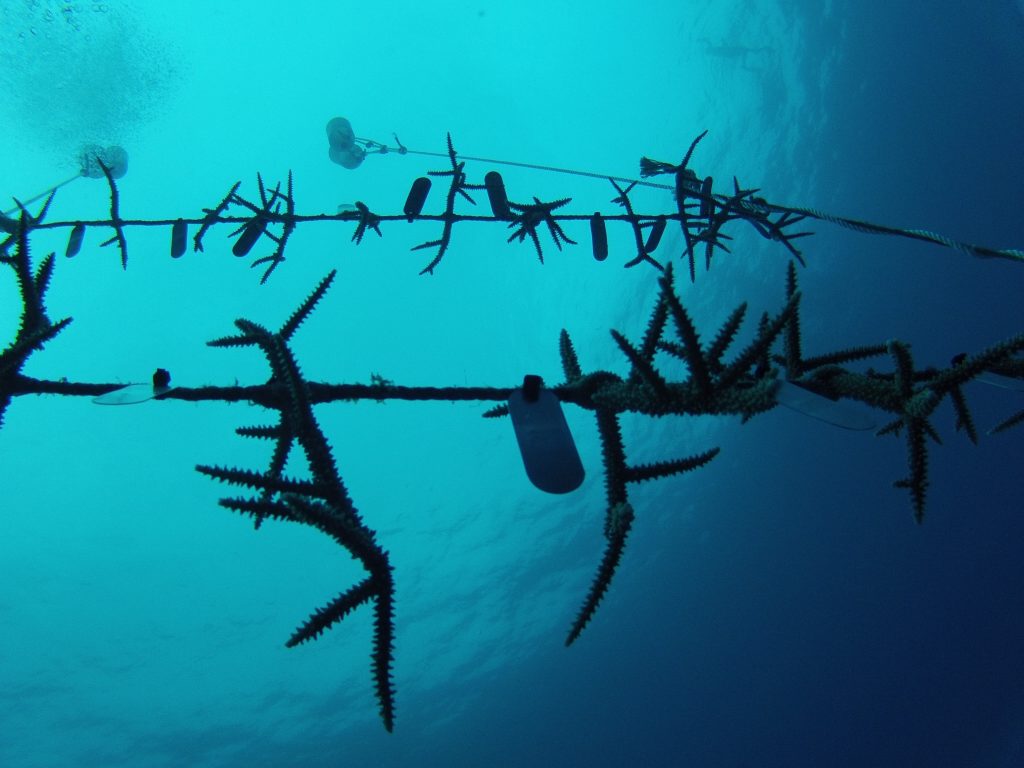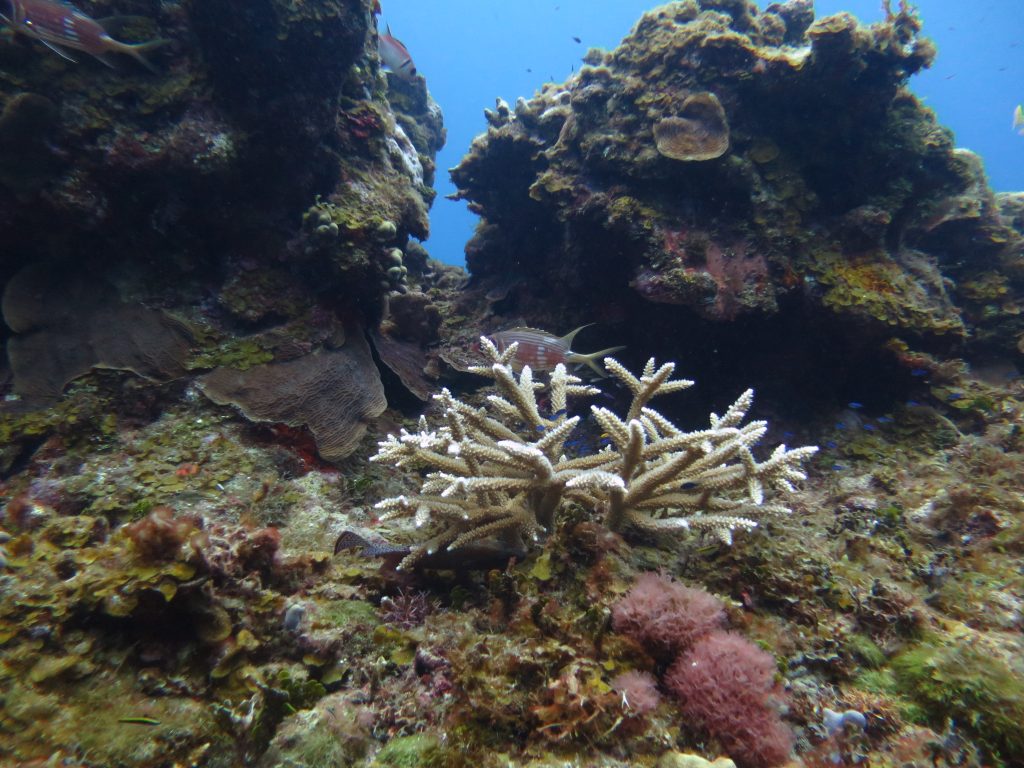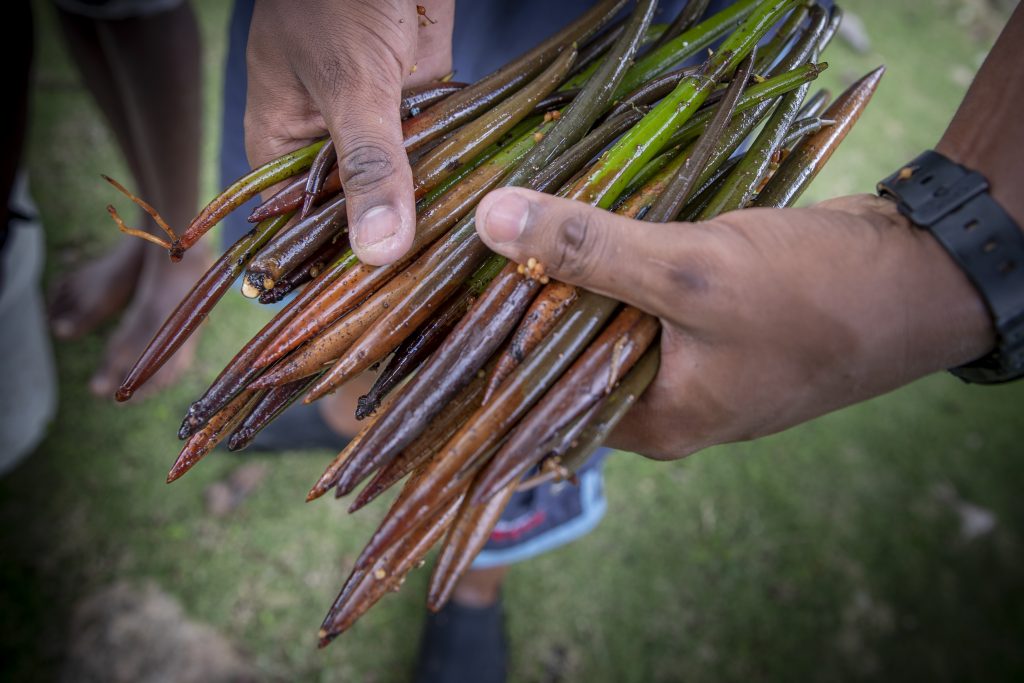Coral Restoration & Nurseries
It is no secret that Jamaica’s coral reefs have suffered great devastation over the years, with a substantial loss in live coral cover due to an increase in the combined effects of human and natural impacts. This has lead to a phase-shift on our reefs from being coral-dominated to now algal-dominated. Coral reefs are extremely important, as they support Jamaicans with food, employment (tourism, fishing, recreational activities), and protects coastlines from hurricanes and storms by decreasing wave energy, provides shelter and protection for a large array of marine organisms.
The AHF works to rehabilitate degraded coral reefs within the EPSFCA through the process of growing corals in a nursery environment, and later transplanting mature corals onto the algal-dominated reefs. The method currently used at our nursery site includes both rope (line) and tree-style nursery designs housing fragments of key reef species – Staghorn coral (Acropora cervicornis) and Elkhorn coral (Acropora palmata).
To date the AHF have successfully outplanted 1500 coral pieces onto East Portland’s reefs. Our ongoing projects include the expansion of the coral nursery and help restore the loss of 3D structures used by juvenile fish and other marine organisms by installing artificial reefs onto degraded areas.
© Denise Henry
Mangrove Rehabilitation
Mangroves are very often disregarded within the marine environment. They can create a highly complex network of plants and animals that are specifically adapted to thrive in saline and nutrient rich conditions. Their ecological significance can range from:
• protecting vulnerable coastal areas from storm surges and against natural disturbances
• supporting local fisheries by acting as a safe nursery ground for many commercially viable fish and shellfish species
• filtering sediments before reaching other sensitive marine ecosystems
Much of Jamaica’s original mangrove and coastal wetlands have been destroyed as a direct result of unregulated development of residential and tourist areas, dredging, sedimentation, filling, marine litter, and oil spills, and indirectly by land reclamation activities.
To revert these negative impacts, the AHF has established a mangrove rehabilitation programme which features harvesting mangrove seedlings (Red and White species) and giving them a head start in a nursery environment, and then outplanting to areas in need of regeneration.
Site suitability assessments have been conducted prior to outplanting, to date the AHF has successfully planted over 1300 propagules of both red and white mangrove species, in over 7 different sites within the Fish Sanctuary.



